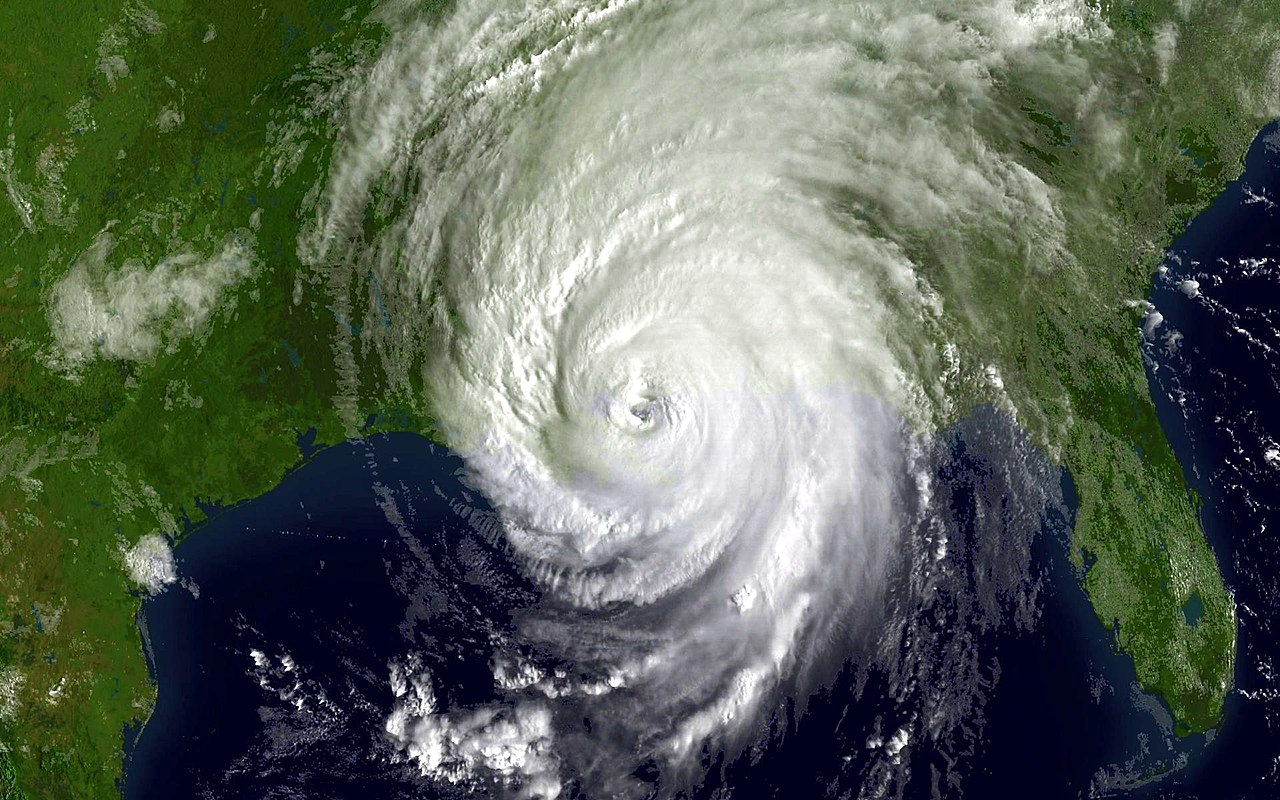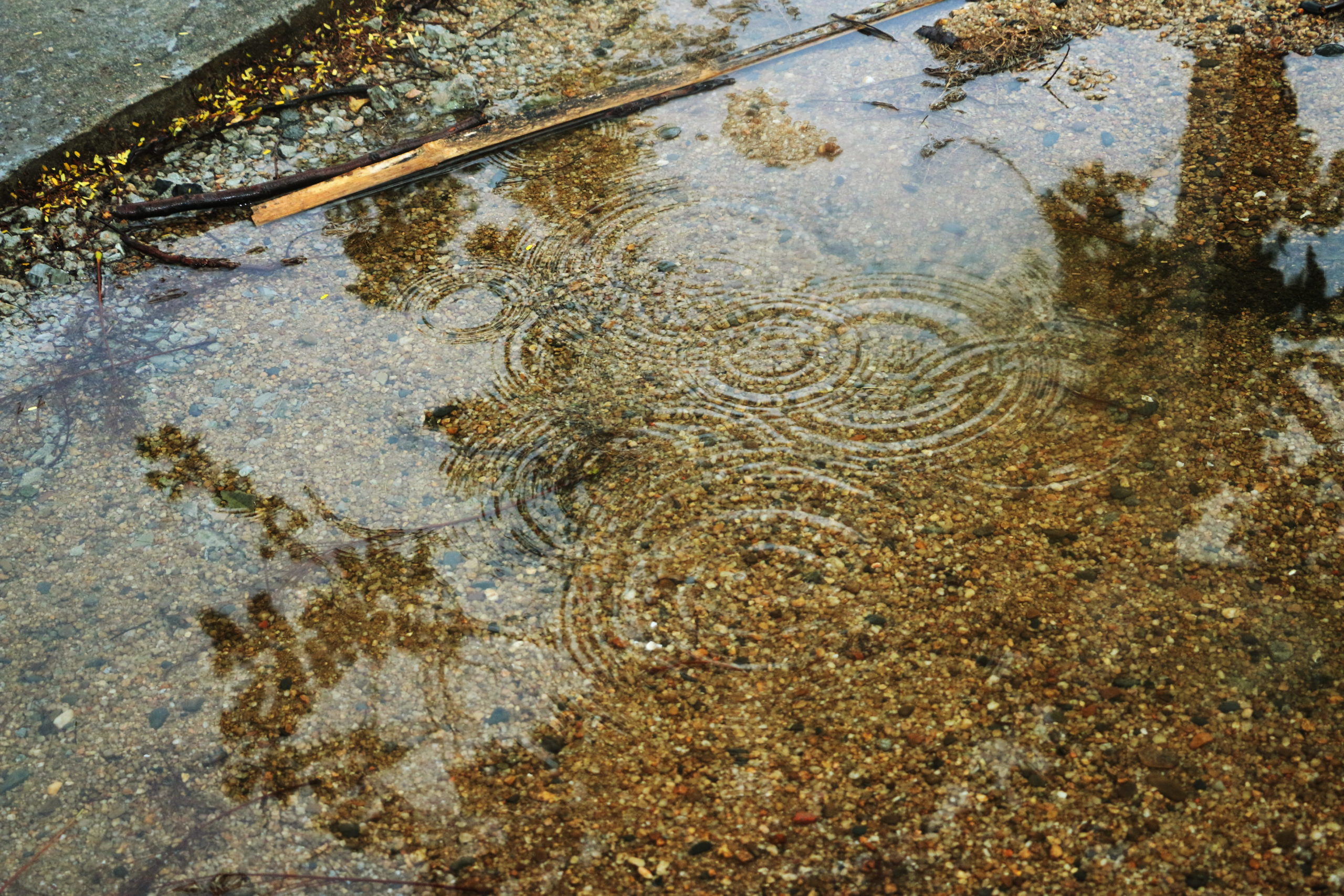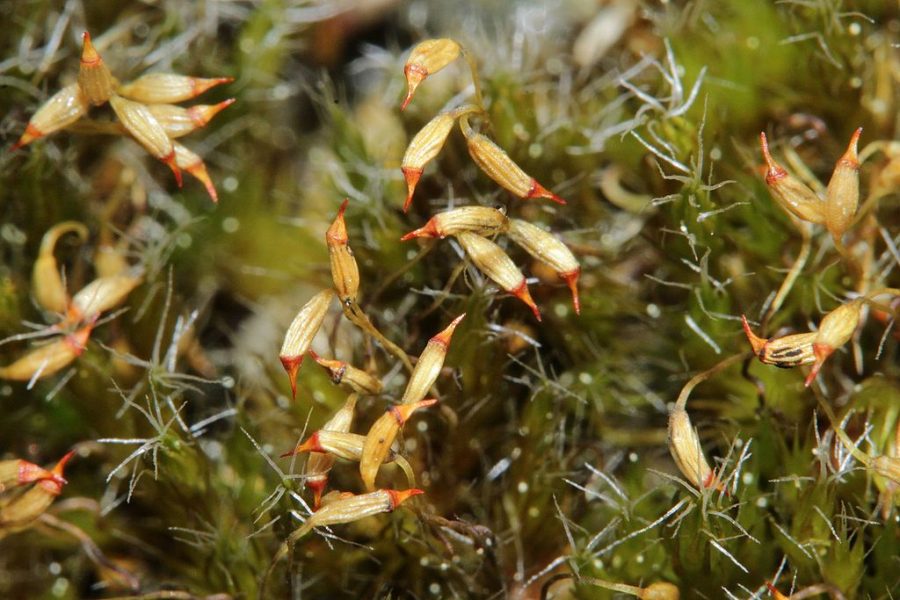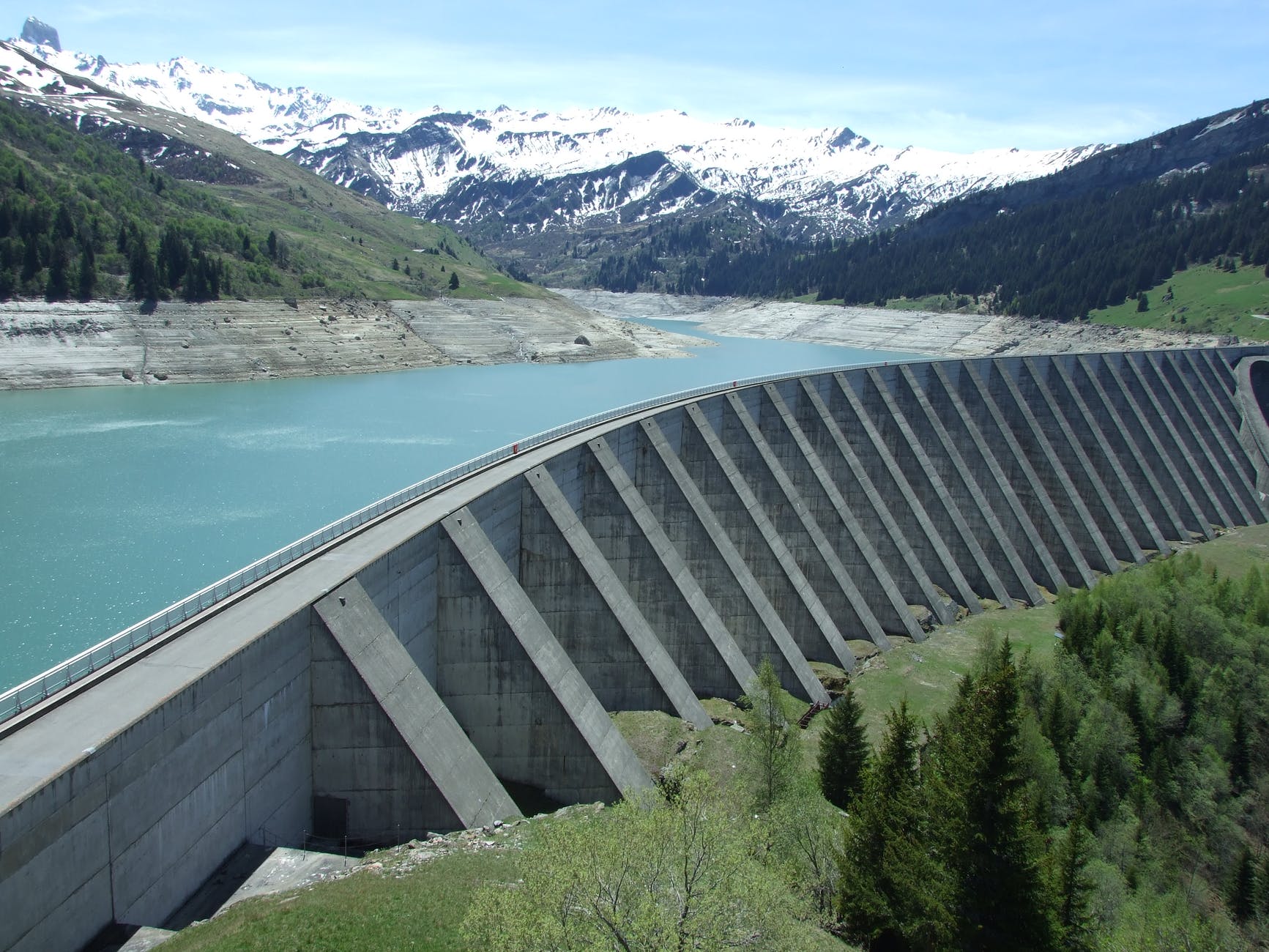Teesside Lecturer in Environmental Science, Dr Lisa Baldini was recently asked to comment on a new study in Nature highlighting the increased risk of landfalling North Atlantic hurricanes tracking further inland under climate change. Here is the article for more details: https://insideclimatenews.org/news/13112020/hurricanes-climate-change-extreme-weather-climate-science.
Geography and Geology undergraduate taster sessions
Are you a teacher in geography, geology, or environmental science?
The University is hosting Environmental Science, Geography and Geology taster sessions. Your students can hear about these degrees, along with seeing evidence of global issues of our time. We would love you to join us!
The online taster session is aimed at year 12, 13 or Access students:-
Join Peter Beveridge, the course leader for Earth Sciences at Teesside University to learn about the exciting subject areas of Environmental Science, Geography and Geology. Peter will explain how a degree in these subjects can lead to rewarding careers with real impact on society.
Peter will also show you evidence of great global issues of our time – climate change, fresh water supply and energy generation!
Booking is essential by the student.
The session will be delivered using Microsoft Teams Live, a link will be sent the day before the event.
What wood would be good for 3D?
Last week, we visited Vindolanda for a bit of a tester session of how effective 3D imaging strategies may be on some of their wooden collection. Yes – we actually visited… in PERSON! Our first socially distanced visit and with the glorious company of two other researchers at Teesside University, Rebecca Strong and Matthew Crowther:
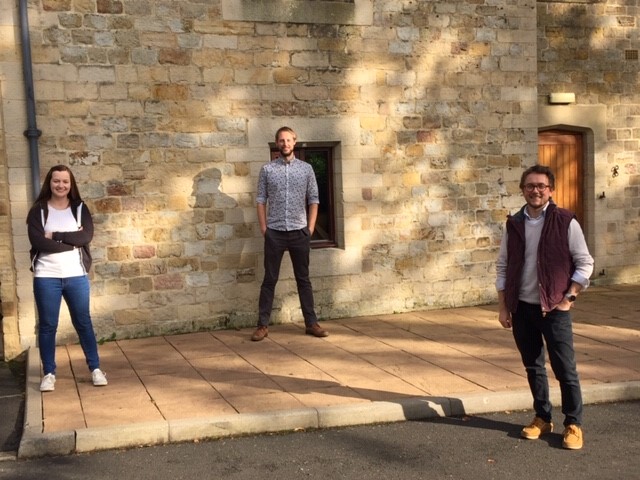
Vindolanda has a lot of wood in fantastic preservation. 3D imaging can normally capture wood beautifully, but we were interested to see whether we could capture the difficult things, such as little bits of graffiti carved into tools, woodworker’s stamps in the intricately designed combs, and the combination of wood, cob nails and vivianite in shoes. By and large, it was pretty successful! We’re still processing the scans, which will unfortunately take a while longer due to COVID-related access issues, but hopefully we can share them all with you soon. But for now, how about one of the shoes!
Now, the combs. We can say with pretty high confidence that these did not scan well. This was expected really, due to how intricate the geometry was and the stamp of interest being flush with the surface and visually unclear in the original object. But, we could maybe work a bit of photographic manipulation and extract some of the details to make a 3D relief of the comb instead, similar to some work we have done with the writing tablets. This certainly can’t be used for geometric analysis, and the colourful woody textures are lost, but it does offer a different approach to viewing the small and sometimes indiscernible evidence of individuals working away at Roman Vindolanda!
Pretty funky, right!? These visits are really important when planning a new 3D strategy within archaeological projects and museum displays because whilst we can offer some suggestions from afar, actually having a go scanning and engaging in detailed discussion really lays out what can, can’t, and could be done with the specific objects and their display! So, keep and eye open for some more of our wooden models, and who knows, maybe there will be some exciting developments soon..!
Anyway, happy to say that Vindolanda is even more picturesque than before 2020. If you’re sick of walking around the same old park for the past 8 months, commenting on the same old tree and the same old weather today, how about visiting the fabulous site and museum? As a bonus, they still serve great cakes in the café!
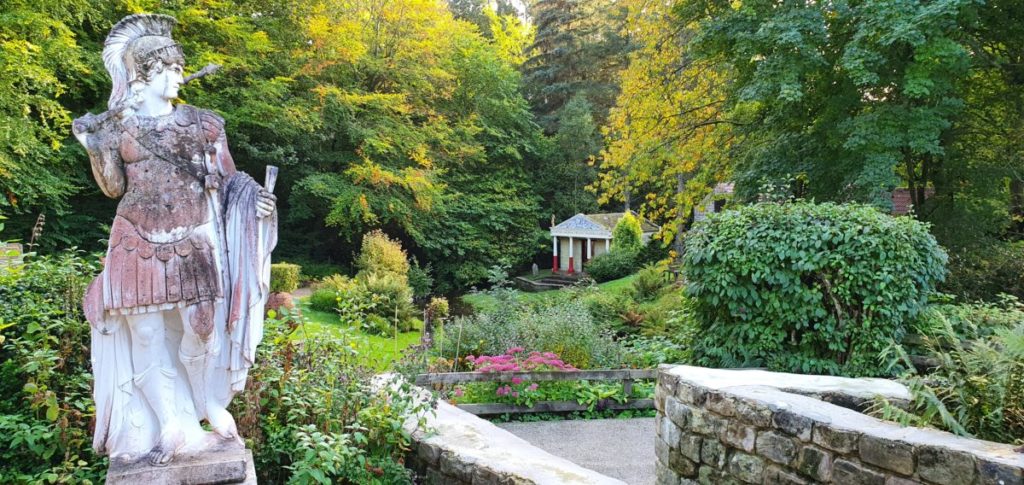
Now, at the start of the year, back when many people probably hadn’t heard of the place Wuhan before, we were gearing up for a couple research talks across Europe and planning our best-selling, No.1 hit blog posts to accompany them. Unfortunately, these were cancelled, as you can probably guess why. One of these, the Roman Finds Group, postponed the meeting to this weekend, to which we had the absolutely pleasure of being invited to showcase our 3D modelling work in a session dedicated to digital engagement at Vindolanda. Better yet, the normally modest audience bolstered to over 250 delegates across the two days! It was so good to see unanimous agreement on the importance of 3D in public engagement, exploring new and inclusive applications beyond focusing purely on a research viewpoint. There were even people that had held our 3D printed cranium many moons ago and still remember it fondly with every passing day! (Okay I may have embellished a little there). Maybe I’m bigging it up too much, but this was the first time I ever received a “hear hear” so I’m rolling with it.
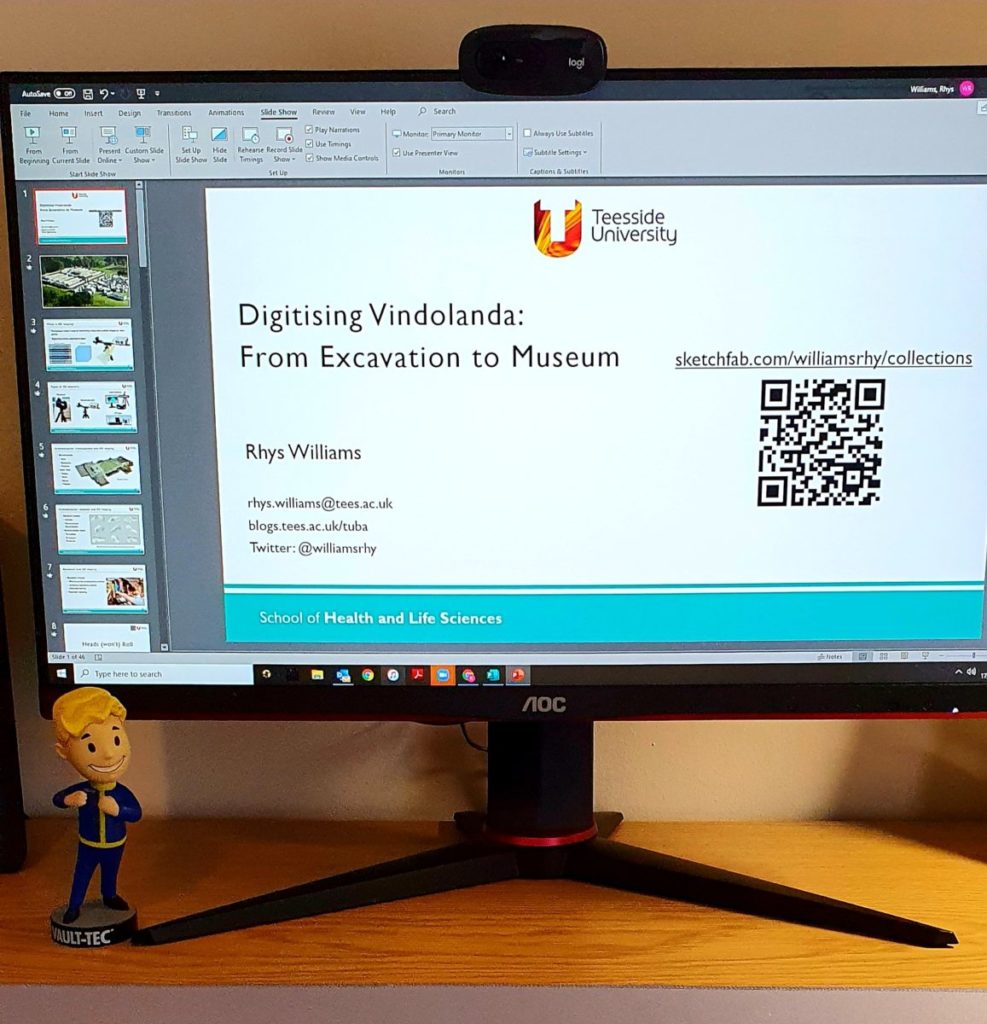
If you’re interested in viewing some of the talks for yourself, keep an eye out on the Roman Finds Group because they should be available online soon! In the meantime, check out the new Vindolanda game Vindolanda: The Missing Dead, available on the Google Play Store now ready for your next visit. It looks super! The entire meeting was fantastic, great work being shown from across Roman Scotland, North England and Vindolanda, but of course y’all know we love our 3D – I mean… it’s in the title of this post!
Until next time!
TUBA
Student Researcher Work: Developing an inexpensive and safe methodology to extract microplastics from river sediments using LST Heavy Liquid
Joseph Mwamba conducted a research project with the Earth, Ecology and Environment research collective, while studying for his undergraduate degree at Teesside University and shares his conclusion:
“Plastic forms part of land and marine litter around the world. Plastics are manufactured in their hundreds of millions of metric tons globally and are often abandoned after use in the environment where they can remain for a long time. These form 2 types of pollutants: macro and micro litter.
Macro litter is big (> 5mm) while micro litter is small (<5mm).
Plastic macro litter, macroplastics, have been observed to injure or kill marine animals and birds by process of entanglement or suffocation from ingestion. Over time, macro litter fragments into micro litter due to the influence of UV radiation, hydrolytic properties of seawater/ water and oxidative properties of the atmosphere etc.
Plastic micro litter, microplastics, have been shown to be ingested by birds, fish and other marine organisms and there is concern about the implications of this. The full impact of microplastic pollution is yet to be understood and more research is needed.
Currently, efforts are being made to understand the impact of microplastic pollution. Identifying and isolating microplastics are the initial steps of the process. Microplastics sampled from sediment are extracted primarily by density separation or floatation. Microplastics in biota are extracted by chemical digestion.
Microplastics from seawater are extracted by filtering with nets. Once microplastics are extracted, there are identified visually under dissecting microscope with the help of fluorescence microscopy. Other identification methods include Infrared spectroscopy, Raman spectroscopy and Pyrolysis – GC/MS.
In this Student Researchers project, I wrote a mini literature review on various methods of extracting microplastics from sediments. By reviewing the extraction efficiencies and methodology of different methods, we found that methods that improve on classic density separation by using denser extraction liquids and more extraction techniques i.e. elutriation followed by density separation or the Munich Plastic Sediment Separator (MPSS), were the most successful at extraction of microplastics (small/ S-MPP: < 1 mm and large/ L-MPP: 1 – 5 mm) from sediment.
This informed our choice and method construction to improve the classic density by using the technique with LST Heavy Liquid to extract microplastics from sediment. We also found out in the review that although techniques for the extraction of microplastics were > 90% efficient now, in every other new method reported to the field, data was recorded differently and this posed a problem in the comparability of data from and studies couldn’t fully inform each other of microplastic studies around the globe. We kept this in mind when designing our method.
We then designed a method to extract microplastics from sediment using LST Heavy Liquid. Here we presented a less toxic and recyclable alternative extraction fluid to zinc chloride (1.6 – 1.7 kg/L) which is currently one of the best extraction solutions. LST Heavy Liquid’s density is much higher and allows for extractions of more microplastics than before.
Our method for extraction analysis is counting under a dissection microscope and this allows for data comparison as this is a popular analysis. This blog post makes public our work and allows those who read it to understand important issues of data comparison and work to make sure the problem is solved in future. We also through this work hope to inspire further innovation that will allow extractions to get better as has been the trend thus far.”
A novel nudivirus infecting the invasive demon shrimp Dikerogammarus haemobaphes (Amphipoda)
Dr Jamie Bojko at the National Horizons Centre (Teesside University), and colleagues at the Centre for Environment, Fisheries and Aquaculture Sciences (Cefas) and the University of Florida, have found and described a new DNA virus. The Nudiviridae are a family of large double-stranded DNA viruses that infect the cells of the gut in invertebrates, including insects and crustaceans. The phylogenetic range of the family has recently been enhanced via the description of viruses infecting penaeid shrimp, crangonid shrimp, homarid lobsters and portunid crabs. Here we extend this by presenting the genome of another nudivirus infecting the amphipod Dikerogammarus haemobaphes. The virus, which infects cells of the host hepatopancreas, has a circular genome of 119,754 bp in length, and encodes a predicted 106 open reading frames. This novel virus encodes all the conserved nudiviral genes (sharing 57 gene homologues with other crustacean-infecting nudiviruses) but appears to lack the p6.9 gene. Phylogenetic analysis revealed that this virus branches before the other crustacean-infecting nudiviruses and shares low levels of gene/protein similarity to the Gammanudivirus genus. Comparison of gene synteny from known crustacean-infecting nudiviruses reveals conservation between Homarus gammarus nudivirus and Penaeus monodon nudivirus; however, three genomic rearrangements in this novel amphipod virus appear to break the gene synteny between this and the ones infecting lobsters and penaeid shrimp. We explore the evolutionary history and systematics of this novel virus, suggesting that it be included in the novel Epsilonnudivirus genus (Nudiviridae). https://www.nature.com/articles/s41598-020-71776-3
Research grant to study viruses in mosses
Dr Jamie Bojko, undergraduate student Adam Ozkan and Dr Ambroise Baker were successful in securing a research grant from the British Bryological Society to carry out preliminary research into the viruses of bryophytes (small plants also known as mosses and liverworts) in the UK.
This research aims to conduct preliminary screening of three bryophyte species, and their microbiomes, to search for the presence of DNA viruses as well as endogenous viral insertions, reflecting their evolutionary history with viruses. This pioneering work will open new horizons to comprehend yet unsubscribed bryophyte-virus relationships, which underpin the ecosystem services provided by bryophytes.
New output : A new holistic framework for inter-basin water transfer schemes
Sinha P, Rollason E, Bracken LJ, Wainwright J, Reaney SM. 2020. A new framework for integrated, holistic, and transparent evaluation of inter-basin water transfer schemes. Science of the Total Environment.
Water shortages are forecast to affect 50% of the world’s population by 2030, impacting developing nations most acutely. To increase water security there has been a significant increase in Inter-basin Water Transfer (IBWT) schemes, engineering mega-projects that redistribute water from one basin to another. However, the implementation of these schemes is often contested, and evaluation of their complex impacts inadequate, or hidden from full public scrutiny. There is an urgent need to develop more integrated, holistic, and transparent ways of evaluating the multiple interlinking impacts of IBWT schemes of this scale. In this paper, we address this gap by outlining an experimental methodology to evaluate IBWT schemes using a multidisciplinary and transparent methodology which utilises publicly available data. We illustrate the method using a case study from the Inter-Linking Rivers Project in Northern India, comparing the results of the experimental approach against the official analysis of the proposed scheme produced by the State Government of Jharkhand. The results demonstrate that the proposed experimental method allows more detailed evaluation of spatial and temporal variability in water availability and demand, as well as holistic evaluation of the functioning of the proposed scheme under different future scenarios. Based on these results we propose a flexible framework for future evaluation of proposed water transfer schemes which embeds the principles of integrated assessment, transparency, and sound science which can be adapted to other IBWT projects across the world
Infectious disease in wildlife
Our very own Jamie Bojko was in the limelight again with this Teesside University press release that was relayed in the local press (Teesside biologist explores infectious diseases
Northern Echo, p.45 and online, 12/06/2020). Originally published online by Teesside University’s Media Centre
“Dr Jamie Bojko, a Biology Lecturer in the University’s School of Health & Life Sciences, says that understanding disease diversity and emergence in wildlife systems is vital to determine how emerging diseases arise and how they might evolve.
Together with colleagues at the University of Florida (UF) and Fish and Wildlife Commission (FWC), the research team have recently identified a new genetic lineage of parasite, known as a microsporidian, from crustacean hosts.
Jamie said: ‘This parasite infects the muscle of four crayfish species local to Florida and eats away their tissues, leaving a husk of parasitic spores.
‘The parasite uses a straw-like tube to inject a gooey-centre into a crayfish muscle cell. This then develops into multiple clone parasites, which form spores to survive in the environment and move on to infect new hosts, completing the cycle.’
Dr Jamie Bojko is working with Dr Donald Behringer, Dr Lindsey Reisinger and PhD student Cheyenne Stratton, all from the University of Florida, along with Paul Moler, from the FWC. The Research team recently published a paper in the Journal of Invertebrate Pathology which highlights the findings of this brand new lineage of parasite, which is reducing the health of crayfish populations.
The group are now looking to examine what effect this disease has on crayfish and how any changes might result in alterations to the local ecology. To do this, the researchers are examining how the disease might change its host’s behaviour, how it might be contracted, and what risk it poses to other invertebrates.
The team have now received further funding from the Wisconsin Department of Natural Resources, to explore this parasite group, in addition to further parasites, to determine whether this disease is able to infect other hosts.
Jamie says that exploring different ecologies for new diseases is hugely important to understand both presence and risk, not only to local species but, additionally, how diseases can change the environment.
Jamie added: ‘There are not many people in the world who research aquatic wildlife disease so to be involved in something like this from the beginning – looking at how a brand-new disease evolves underwater – is incredibly exciting.
‘It is great for me as a biologist, but also great for Teesside University to be working with partners in Florida on such an important piece of research.’
One of the key elements of the new research will be trying to find out if any of the parasites they have discovered are a risk to local species.
‘Many of the crayfish we are working with are invasive species, and can often introduce new parasites to different locations. These parasites may be able to infect native species and cause a wildlife epidemic,’ said Jamie.
‘If we can understand how these new parasites transmit and what else they can infect, we can then start to learn more about the disease and how it might spread and evolve.
‘This brand-new parasite, which we have named Cambaraspora floridanus (after the hosts and location), has little known about it and there is a lot to do. As with any new disease, it is vitally important to understand how it fits into the ecosystem and whether it might cause any irreversible changes to the ecology and crayfish population.
‘We have explored the pathology caused by the parasite and now want to determine whether it has a wider impact on the ecosystem. If it is able to infect multiple species of crayfish then it may be able to infect other invertebrates and maybe even fish, resulting in an impact on the wider freshwater community.’ “
“Seeing Red” contribution to Athena Swan stories
The Ecology and Environment Research Collective contributed to Athena Swan stories on Teesside University’s website with a piece called “Seeing Red”. We described efforts to make field work in the natural environment more inclusive to our community of researchers and students.
The article is reproduce here:
“Field trips are an essential practical and experiential part of teaching, learning and researching the natural environment for degrees and research programmes across biology and geography.
“However, there are many barriers to bringing people into the field and some of these barriers can be particularly discriminatory towards women. To address these barriers and facilitate access to field experiences for women, a team in the School of Health and Life Sciences has been developing measures aimed at greater inclusivity, some of which are specific to women. A key part of this strategy is the development of workflow authorisation for field trips which features a checklist of inclusivity measures.
“When planning taught sessions in the natural environment we try as much as possible to keep the similar time slot as used for classroom teaching and attempt to blend as much as possible a mixture of short field trips and residential trips. This enables learners with caring responsibilities to participate in field trips.
“Increasingly, a high proportion of learners express difficulties of a psychological nature, such as anxiety, prior to taking part to group activities in an un-familiar environment. We have seen this from our experience but it has also been evidenced in national studies which shows that young women are three times more likely to suffer some form of mental health than young men. To help those who are anxious about group activity in an un-familiar environment, we have integrated field preparation sessions into the programme and are currently developing a Minecraft tool to give students an opportunity to familiarise themselves with field work techniques before stepping outdoors. To enable students to build up field skills gradually we start field work in a familiar destination such as the university campus.
“From our experience, we found that some of the anxiety surrounding field trips came about as a result of concerns in relation to availability of toilet/hygiene facilities during field trips. In response to this, staff in the School of Health and Life Sciences have adopted an innovative approach to this. Our new student field guides now identify and signpost, in advance, all opportunities for toilet / hygiene facilities during visits. Typically we plan at least two stops (with plenty of time) into each trip. In addition, the guides highlight the ‘period pack’ carried along with all field equipment, making sure that students who have periods during a field trip are able to access toiletries if required, hopefully reducing anxiety.
Period and Menstrual Hygiene Equality Guide
Toilet stops in the field: An educational primer and recommended best practices for field-based teaching“
Cracking On During Lockdown
Hello, been a while! So, we were originally planning to give you an exciting blog post around now, all about lots of different research going on at Vindolanda, and other conferences that each of us were attending during Spring. Unfortunately, as we all know, plans have changed just a little tiddle bit. But of course, there are still plenty of things going on at TUBA!
Digital Models
The fantastic thing about digital modelling in archaeology is that people can view artefacts without needing to directly handle them and risk damage. This is not just within the museum environment, but from your home too! Have you seen our new 3D models? We’ve got a few!
Come on down and do the locomotion! This is a laser scan of the Locomotion No. 1 at the Head of Steam Museum, Darlington. This has also been 3D printed for the museum!
Explore part of Teesside University campus! This involved terrestrial laser scanning and a ton of compression to make small enough for online hosting.
If you’re interested in 3D imaging for your own research and museum collections, feel free to take a look at our reference collection of different colours and materials, and get in contact if you’d like more information or scanning done!
PhD, or not to be?
Although that-which-must-not-be-named has thrown a right spanner into all our work plans, we’re adjusting our plans accordingly and doing our best working from home. Luckily (?), we all had plenty of writing up to focus on whilst we can’t access the labs. Although, admittedly, working from the kitchen table on those precious IKEA dining chairs comes with a bit more backache than from our lovely office space at the NHC and Middlesbrough campus. And yet – style over substance, they say!
Even under those conditions, we have seen some major milestones, and what kind of update would this be without at least mentioning PhD progressions? Better yet, it’s all good news. Helga has passed her 3rd annual review and is flying into her final write-up! Aboli has also passed her 2nd annual review, and is raring to go with degradation experiments. Finally, Rhys has submitted his thesis (!!) and is nervously excitedly looking forward toward his viva in the coming weeks. Fortunately, TUBA can still virtually get together each to make sure we are all in good spirits which, admittedly, always ends up as teasing Helga about what stage her unborn baby is on the vegetable scale [edit from Helga: currently a cauliflower or acorn squash depending on your sources].

Papers
We’ve got a couple papers well in the peer-review process, covering our work with pXRF for leather and soil analysis, archaeological mapping, 3D imaging, and burial degradation. These will get their own behind-the-scenes blog post when they come out, so look out for those hopefully coming soon!
NHC
Finally, the National Horizons Centre will be reopening within the next 1-2 months, with enough social distancing measures in place to avoid needing an eyesight test. And oh boy, are we excited to get stuck in with using brand new, top-range equipment in a whole load of experiments we have planned! If you’re struggling to get some analysis done or can’t access your labs more than once a fortnight due to social distancing in the coming months, get in touch and see what we might be able to do together!
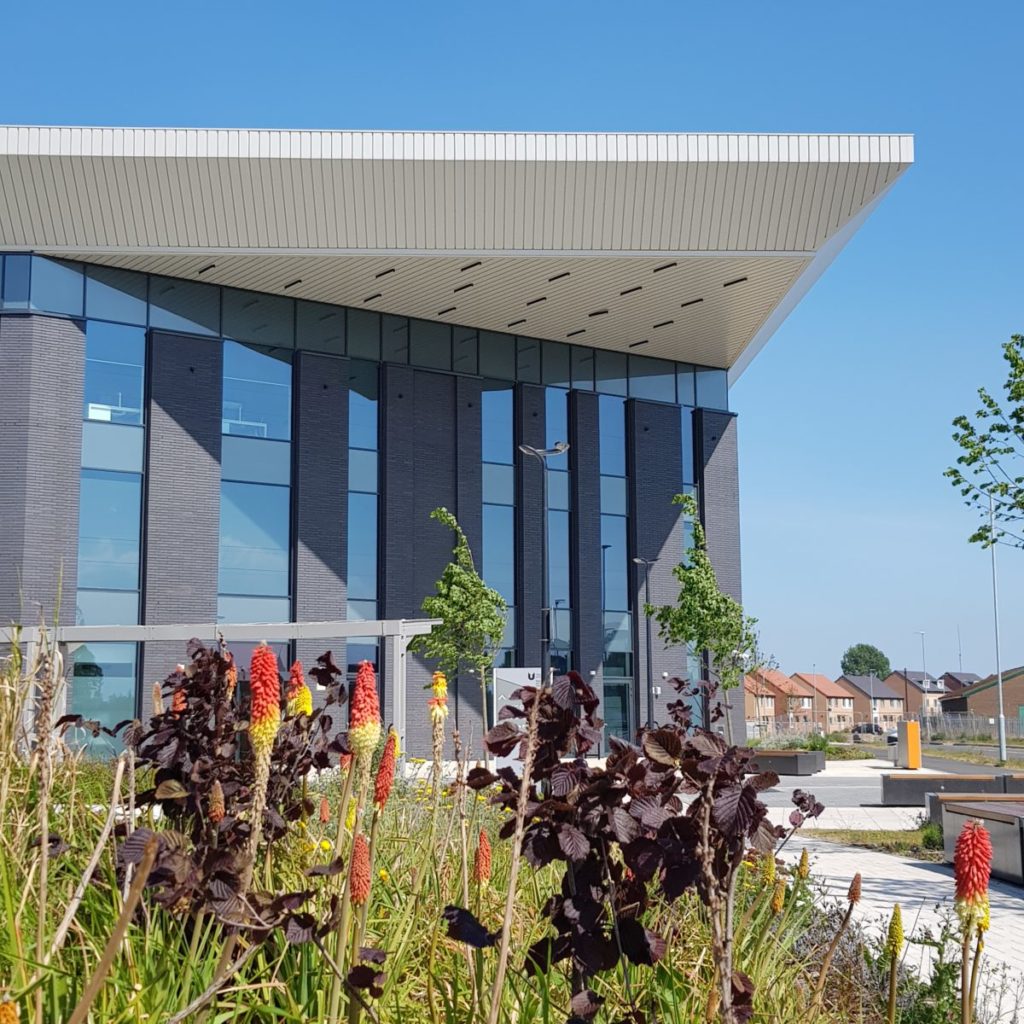
Until next time, when we shall have some brand-spanking, tip-top, exciting new things to share with you!
TUBA


